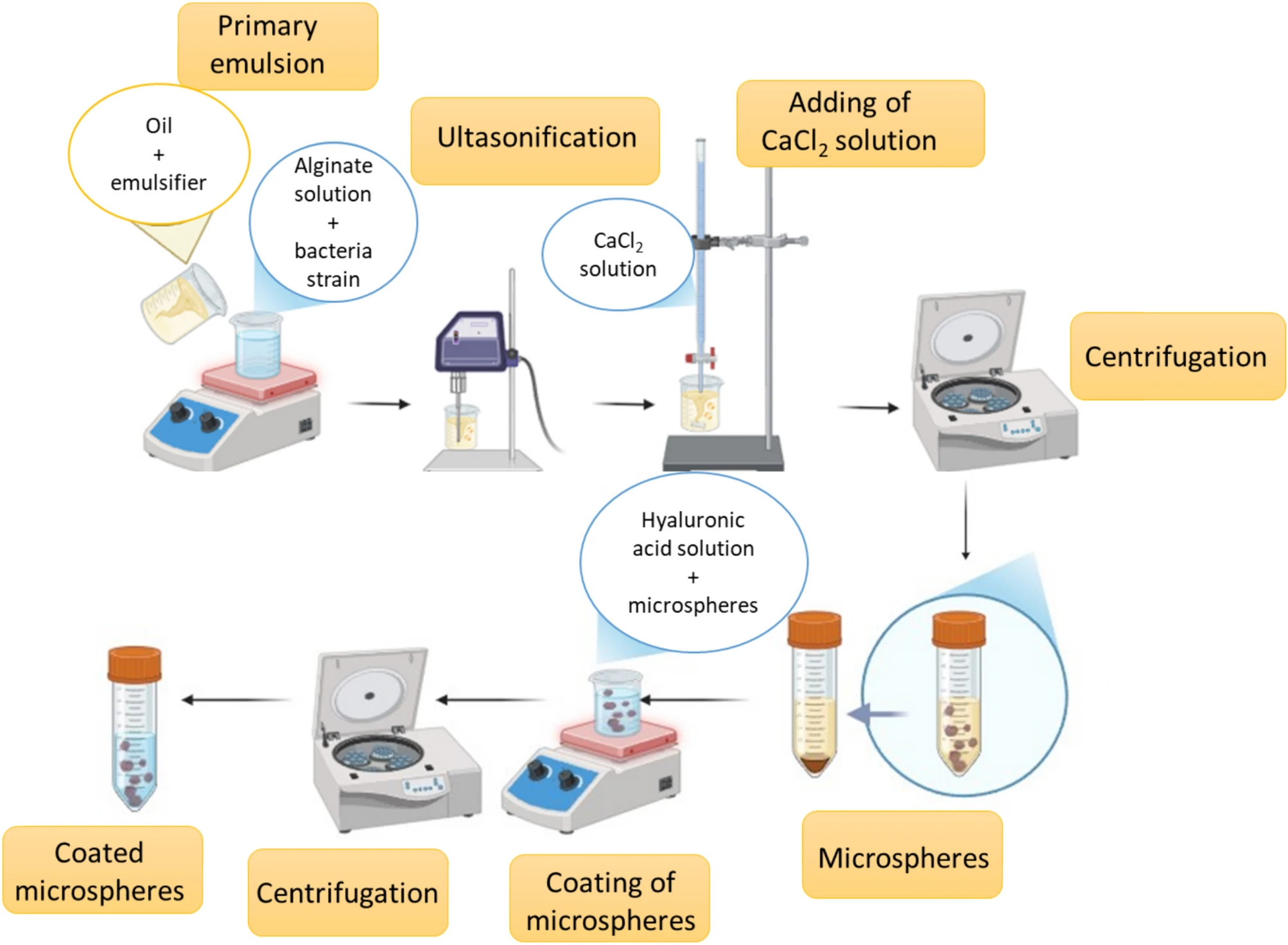The skin microbiome, which includes commensal microorganisms, is integral to maintaining skin health and homeostasis. An imbalance in this microbial community, known as skin dysbiosis, is associated with numerous dermatological issues, including acne vulgaris, atopic dermatitis, psoriasis, wound infections, and skin aging. Dysbiosis represents a disturbed microbial balance that requires modulation to restore equilibrium.
The use of pre- and probiotic agents has been explored as a solution to address this imbalance. Probiotics introduce beneficial live microorganisms that help boost natural defenses and enhance skin integrity, while prebiotics nourish these beneficial bacteria, thereby supporting a balanced microbiome. Leveraging the existing knowledge and manufacturing technology from the food and pharmaceutical industries, which widely use probiotics to regulate the gut microbiome, allows for the straightforward development of formulations aimed at maintaining skin microbiome health. A key challenge in creating a topical formulation with live probiotic bacteria is selecting a suitable carrier that ensures stability and safe delivery. Therefore, the novel approach explored in this study involved encapsulating the probiotic strain in biocompatible, biodegradable, and non-toxic alginate–tapioca microspheres.
Methods
The research employed in vitro methods to evaluate the potential of a novel topical formulation. The study began by assessing the antimicrobial activity of the probiotic strain, Lactobacillus casei ATCC 393, against pathogenic (S. aureus) and commensal (S. epidermidis) strains using time-kill and agar-well diffusion assays. The probiotic strain was then encapsulated in hyaluronic acid-coated alginate-prebiotic (tapioca flour) microspheres and incorporated into a topical formulation (E2), while a base formulation without microspheres (E1) served as a control. Subsequent in vitro safety and efficacy studies were performed on human keratinocytes (HaCaT) and fibroblasts (HSF), examining cytotoxicity, cell proliferation, pro-inflammatory cytokine release (IL-6 and IL-8), regenerative potential using a scratch assay, and the overall impact on various commensal and pathogenic skin reference strains.
Key Findings
• Antimicrobial Activity of L. casei: The probiotic strain L. casei exhibited strong activity against the pathogenic strain S. aureus, reducing cell count by 0.99 log after 24 hours of co-culture. L. casei metabolites created inhibition zones exceeding 5 mm against S. aureus in the well diffusion assay. Crucially, L. casei did not inhibit the growth of the commensal strain S. epidermidis.
• Formulation Safety (Cytotoxicity): Both the base formulation (E1) and the probiotic formulation (E2) demonstrated similar, relatively low cytotoxicity in both human keratinocytes and fibroblasts, with the concentration required to achieve 50% cytotoxicity (IC50%) being approximately 10% for both cell lines.
• Targeted Growth Inhibition: The topical formulation containing encapsulated L. casei microspheres (E2) effectively inhibited the growth of pathogenic strains (E. coli, S. aureus, C. albicans, and C. neoformans) compared to the base formulation (E1), achieving growth retardation up to -2.82 log after 24 hours. C. neoformans and S. aureus showed the highest sensitivity to the E2 formulation.
• Commensal Tolerance: The E2 formulation had a minor, comparable effect to the E1 formulation on the growth of tested skin commensal strains (S. epidermidis, M. luteus, S. hominis, and S. capitis subsp. urealyticus), suggesting that the probiotic microspheres did not negatively affect the growth of beneficial microbiota.
• Regenerative Potential: The formulation containing encapsulated probiotic microspheres (E2) demonstrated regenerative potential in the keratinocyte scratch assay. At a 0.5% concentration, E2 resulted in virtually complete wound closure after 15 hours, showing an improved effect compared to the control and the base formulation.
• Anti-inflammatory Suggestion: In fibroblast cells, stimulation with the E2 formulation resulted in a less pronounced increase in IL-8 release compared to the base formulation (E1), suggesting a potential anti-inflammatory effect of L. casei.
This research represents a novel achievement as it is the first report demonstrating the successful design and introduction of a formulation for local application on the skin utilizing encapsulated bacterial microspheres. The study confirmed the safety of the developed topical formulation based on L. casei ATCC 393 and its encapsulation in alginate-prebiotic microspheres. The developed formulation (E2) exhibited strong anti-S. aureus and anti-fungal properties while maintaining tolerance for beneficial commensal skin flora.
The future implications of this research are significant for dermatology, suggesting that the formulation may serve as a preparation with pro-regenerative properties. Since conditions like atopic dermatitis are associated with S. aureus growth, the formulation’s effectiveness in limiting S. aureus could make it particularly effective in the care of skin affected by inflammation, or for dry and sensitive skin. Restoring skin flora balance may lead to the restitution of a proper skin barrier. However, while in vitro results are promising, the sources suggest that dermatological testing is required to fully rule out any minimal pro-inflammatory or irritant effects in humans. Additionally, utilizing more advanced in vitro or in vivo models would be necessary to fully investigate the complex wound healing and regenerative effects observed.
Link to the study: https://tinyurl.com/2bv8vnde


